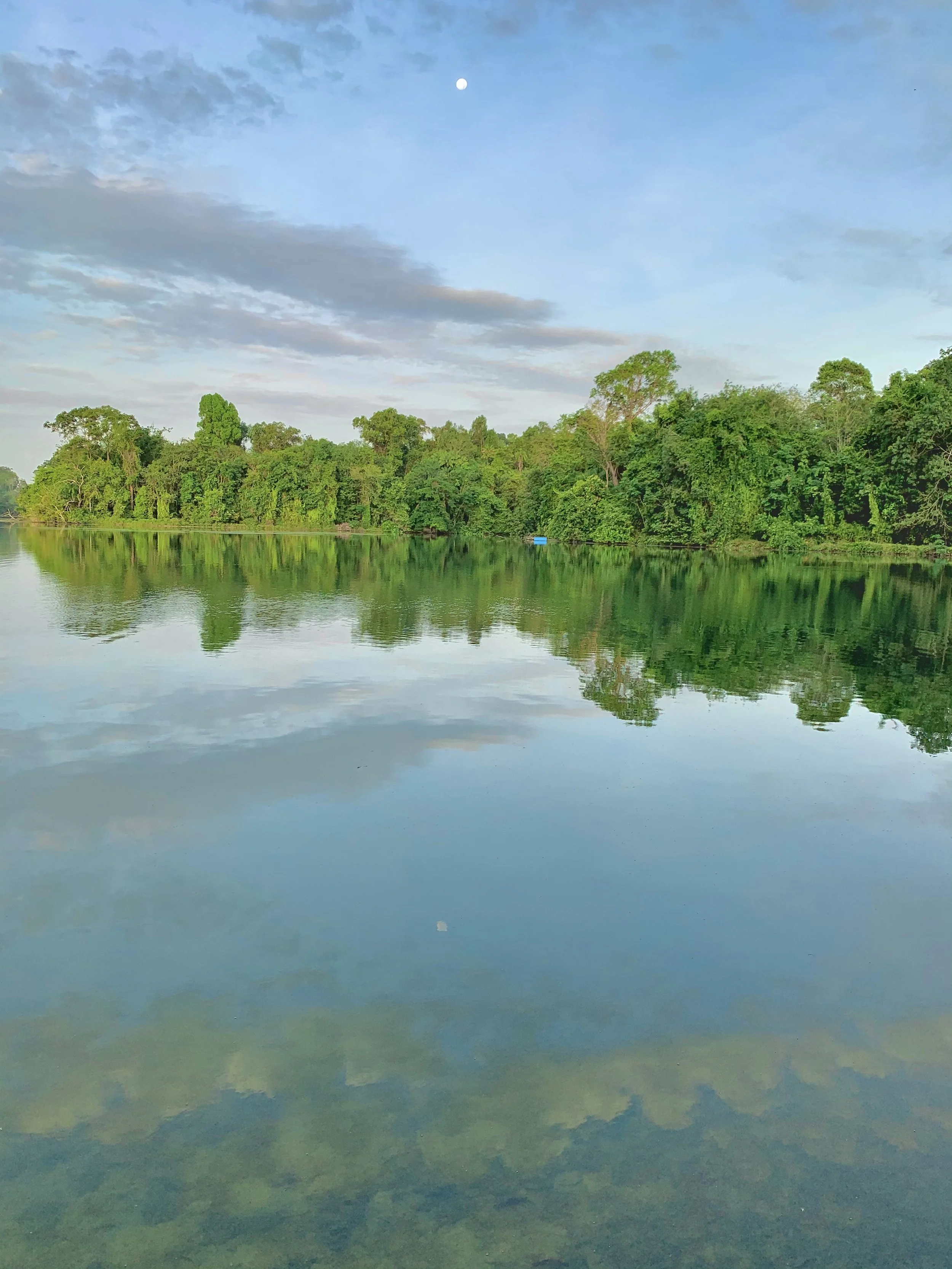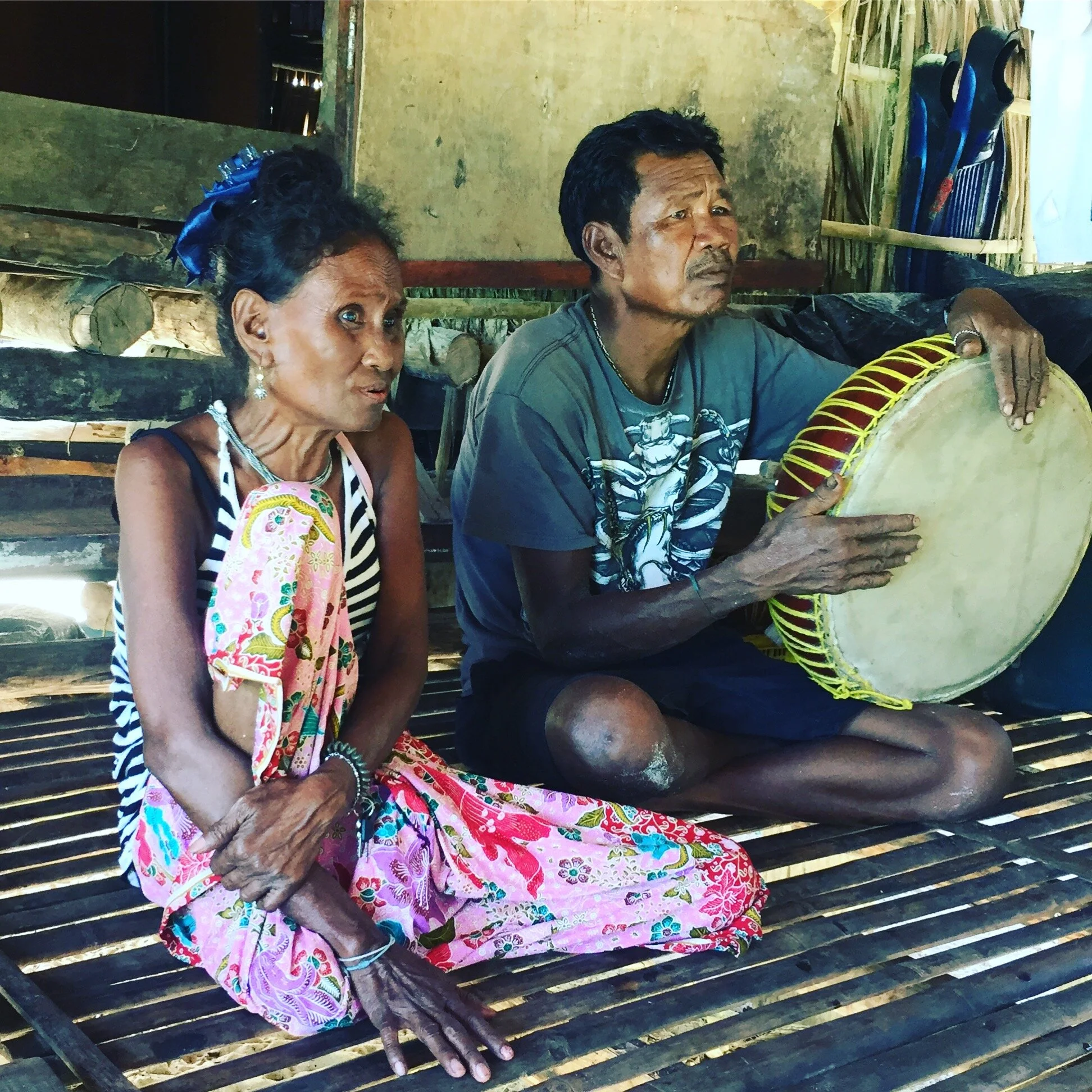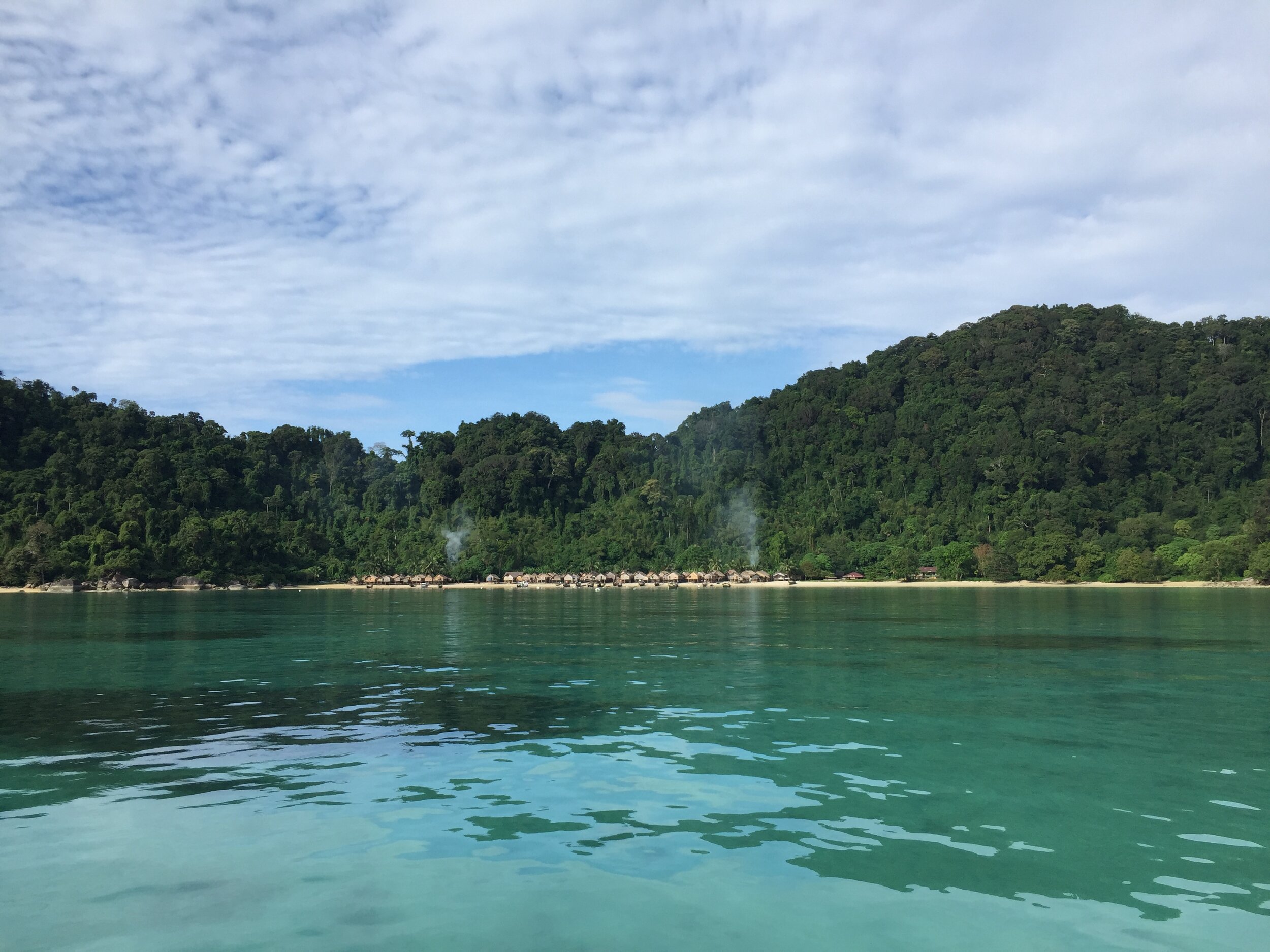A beautiful and poignant book about an expedition to find a near-mythical deer in Laos, reforesting palm oil plantations In Indonesia and my own quest for a rare monkey in Singapore in my latest (and much belated) post.
Setting down some roots
Bearing up in a pandemic
A green graveyard, award-winning images and some fat bears
Greener ways of thinking?
Wetland wonderland
On the wild frontier
These birds can sing
The last song?
This video was shot back in 2017 and features, who is one of the last Moken to still perform these traditional songs.
With her haunting, wavering voice, the video features Sabai, a member of the Moken community. This indigenous, formerly nomadic, group used to spend their lives drifting between the Andaman Sea’s multitude of islands on board their Kabangs or houseboats. These days the pressures of modern life and tightening of international borders, mean the group are now forced to live on land, in Sabai’s case in the Moken village of Ao Bon Yai, located on the beautiful island of Surin, around 60km off the coast of Phuket.
In the video she is seen singing a traditional song about her former life on the ocean and the strong familial bonds between the Moken people. In Moken culture each song is created by the singer and has a special meaning and significance to that particular singer. As Sabai put it to me through our translator: “No one taught me how to sing it just comes from my heart.”
Accompanied by her husband Tat on the Ba Nang, a form of wooden drum, she often performs these ballads for visitors like myself on a Moken Experience tour and at the village’s Labong ritual, the Moken’s most important annual ceremony.
The 60-something Sabai has 11 children, and is one of the last generation to have lived the traditional life on the Kabang but has been a resident in the village since the 2004 Tsunami. Yet a lack of interest from the next generation, means she was also the last person in the village who still remembered and performed these old songs. “When I sing I feel sad, as it brings back memories of old my old life,” she reaclled.
Sabai is one of the last Moken who lived the traditional life on the houseboats
As is the case with many indigenous communities, it looked likely that this cultural practice and the traditions around were in very real danger of disappearing completely with her passing. That knowledge made the experience of listening to her sing, while sat cross legged in her bamboo and pandanus leaf beachfront home, incredibly poignant and emotional, and something I felt compelled to record for some kind of posterity, resulting in this video.
I was lucky enough to visit back in 2017 to learn about the community and to find out more about a tourist initiative that allowed visitors to spend a few days learning about the culture and tradition of these marginalised people who have seen their way of life all but disappear in the last few decades.
You can read more about that experience in this story I put together for Silkwinds alongside the stunning images of Scott A Woodward and with the amazing assistance of Lindsey Reding and the rest of the team at the community-based tour operator Andaman Discoveries.
The whole trip was a truly special experience. Two nights spent pretty much off grid, sleeping in tents on a beach on a remote tropical island with days spent sailing, wading and snorkeling in the brilliant blue waters of the Andaman or hanging out and shooting the breeze with the shy but welcoming Moken. From learning how to throw a harpoon to weave baskets to listening to tales of their beliefs and customs, it was a really eye opening experience and an absolute dream for the eager and inquisitive 18 year old me who decided that anthropology was the only subject worth studying at university – I still believe that to be true!
So, why has it taken me three years to do something with this video? Well it was mostly because I didn’t really know what to do with it or where I should put it. Still, I never forgot that I had it, I knew it was very special, but I always felt that just sticking it up on Facebook or Instagram without any back story seemed something a waste.
Now a combination of some time, creative energy and a website of my own, plus the inspiration of a post by the UN celebrating International Day of the World's Indigenous Peoples (yes it did take me a week to write this) convinced me to finally put it up.
Before I uploaded this post I did also reach out to Lindsey and the Andaman Discovery team to see what has happened to the organisation, the community and Sabai in the three years since we visited.
The good news is that Sabai is still healthy and still singing for visitors to the village but the reality is it has been a tough year for the Moken and for Andaman Discoveries.
The current pandemic and the border restrictions in Thailand forced the tour company to temporarily close its doors for six months, though they remain hopeful that they will be able to open in November and have some guests throughout the high season.
Lindsey did also confirm that they are still working with Moken through the tourism program and also manage to support them in other areas with money from the North Andaman Network Foundation. That included buying one large bag of rice for each Moken household before the onset of rainy season in 2020. Still as Lindsey points out a lot of the foundation funds come from the work of the tour company so the charitable giving projects will suffer as well. Do go to the website to see how you can support them.
Thailand has been better/luckier than most in dealing with Covid and travel is relatively open for those living there, however in line with the rest of the region it does seem unlikely that their borders are going to be open to tourists any time soon – some predictions state it could remain that way until Chinese New Year 2021. If you’re living there then I can definitely recommend a trip with Andaman Discovery. They are genuine and do a lot of good work with the different communities in this beautiful part of the world.
How the pandemic has affected the Moken is still unclear. If you’ve read the Silkwinds story you will know that the community is now deeply affected by and intertwined with the tourist trade, thanks to the revenue generated selling trinkets to the boatloads of tourists who visited Surin Island on snorkel trips. The Surin Islands will reopen in October 15th, but clearly there are not going to be the tourist numbers visiting as in previous high seasons. “They could be facing a very difficult year,” states Lindsey. “They may not be having a lot of work on Surin due to low tourism numbers coming in.”
This isn’t the only hardship to befall the village, which saw all 60+ houses completely destroyed by a fire back at the start of last year. With help from donor organisations and NGOs they were able to recover from that calamity, rebuilding the village in just a few months.
That resilience shows the spirit and sense of community that were a palpable sign of hope I experienced during my own visit. I can only hope that it’s helping them as they face up to these current challenges.
Find out more about news and information about the Moken at:
https://www.andamannetwork.org/ and https://www.mokenislands.com/
#House Hunting
So today I posted my 101st Singapore house on Instagram. And to be honest, that seems like a pretty good place to stop and perhaps use my time and my social media account to pursue more worthwhile activities - like getting a job, though something tells me I won’t be able to stop myself putting up a pic of the odd mansion every now and again.
Still 101 houses (and plenty more that didn’t make the cut) is no small feat and for what it’s worth I thought it would be good to jot something down about the experience – for my sake if nothing else. A memento of four months of morning walks. Four months of poring over google maps to pick out prime routes through fancy looking residential enclaves. Four months of following up on leads from well-wishers. Four months of being asked what exactly the point was.
At the end of the day this whole ‘project’ really started by accident; the result of a jokey post taken at the start of Singapore’s Circuit Breaker measures way back in April. Not being able to travel anywhere I was forced to look closer to home for my dose of exploration. As a result, I found myself using my daily exercise entitlement as an opportunity to scout out the sprawling residential neighbourhoods around our apartment in Holland Village.
What I discovered (and had only half glimpsed before) was a hidden warren of leafy tree-lined streets populated by hundreds of fantastical mansions that were as epic in scale as they were diverse in design.
The house that started it all
The first photo was taken partly in jest, a comment on the sheer over the top nature of the property in question – a massive faux Greco-Roman pile with a swimming pool out front that could easily house a family of 20. It was a house whose sheer pomposity was made even more ludicrous by the fact that it was clearly completely empty.
It was just staggering that in this tiny country, where we are constantly told that space is at such a premium that huge houses like this were sitting unused and unlived in. Even more so at that time. Tight restrictions meant the majority of the population were forced to stay home in their tiny flats while the virus raged like a wildfire through the cramped and over-crowded dormitories housing the huge army of foreign workers; the very same workers who had been brought to Singapore to build and maintain these types of house.
But of course, I’d be lying if I said that stark social commentary was my only (or being honest) even my main inspiration to carry on taking the photos. That was really the joyous wonder I got from discovering the sheer diversity and quality of buildings available to discover a short walk or bus ride from my home. Post-modern, brutalist, art-deco, classical, contemporary the influences and styles on display (and often situated right next to each other on the same street) were simply mind-boggling.
As a fan of design and architecture it was a real treat to uncover this wonderland of styles, trends, fashions and also a fascinating insight into the unique and idiosyncratic personal preferences of some clearly very wealthy owners. Some were simply stunning, architectural gems that took the breath away, some living historical records of Singapore’s past, others monuments to folly and pride, but each was special. Whenever I thought I had seen the most outlandish mansion or the most beautiful home I would turn a corner and stumble across stranger and more eclectic. I really did find an architect’s playground where anything goes, and imaginations have been allowed to run riot, free from anything as boring as planning regulations or conservation considerations.
I came to realise that in many ways they somehow reflected some of the ambiguities that are present in modern Singapore society. Wealth, privilege, excess, modernity, heritage, and the very cutting-edge design techniques, it was all here to be discovered and enjoyed and often was to be found sitting side by side on the same street.
Aside from fuelling my design desires the project also gave me the perfect excuse/impetus to get up early and enjoy the city from a completely fresh perspective. It allowed me to truly appreciate what a green place Singapore really is and what an abundance of nature finds its home in among all the concrete and steel. This was especially apparent while the Circuit Breaker removed the invasive rumble of traffic, clatter of construction and roar of overhead air traffic. Nowhere was this more apparent than in the cornucopia of bird life that greeted me whenever I stepped out the door.
Every morning, just as the sun was rising, I’d be greeted with the whooping calls of the koels, the chatter of the mynah birds and the incessant hollers of the clearly sizeable population of Jungle fowl that call central Singapore home. If I was really lucky, I’d also get to spot more exotic (for me anyway) locals, the brightly coloured kingfishers and orioles, the turbocharged gangs of parakeets or the rambunctious family of sulphur crested cockatoos who would squawk and squabble above my head as I trekked through the Dempsey area.
And, taking everything into consideration, it’s this last reason that I continued taking the photos for so long and why I will carry on taking my morning walks even if I don’t decide to record it via the bricks and mortar structures I see along the way. With no sign that we’ll be getting off this island anytime soon, my morning walks will continue to give me the opportunities to wander down dead end streets, discover new sights and get my daily dose of the natural world all the things I love about travel.
Ps. Just to confirm all 100 different properties were taken within a few kilometre radius of my home and were reached via a long walk or a short bus ride. A HUGE thanks to everyone who commented on their favourites or suggested roads and areas to explore.
Pps. I have been considering exploring some of Singapore’s architecturally interesting religious buildings next so if you do know anywhere….
























































































































